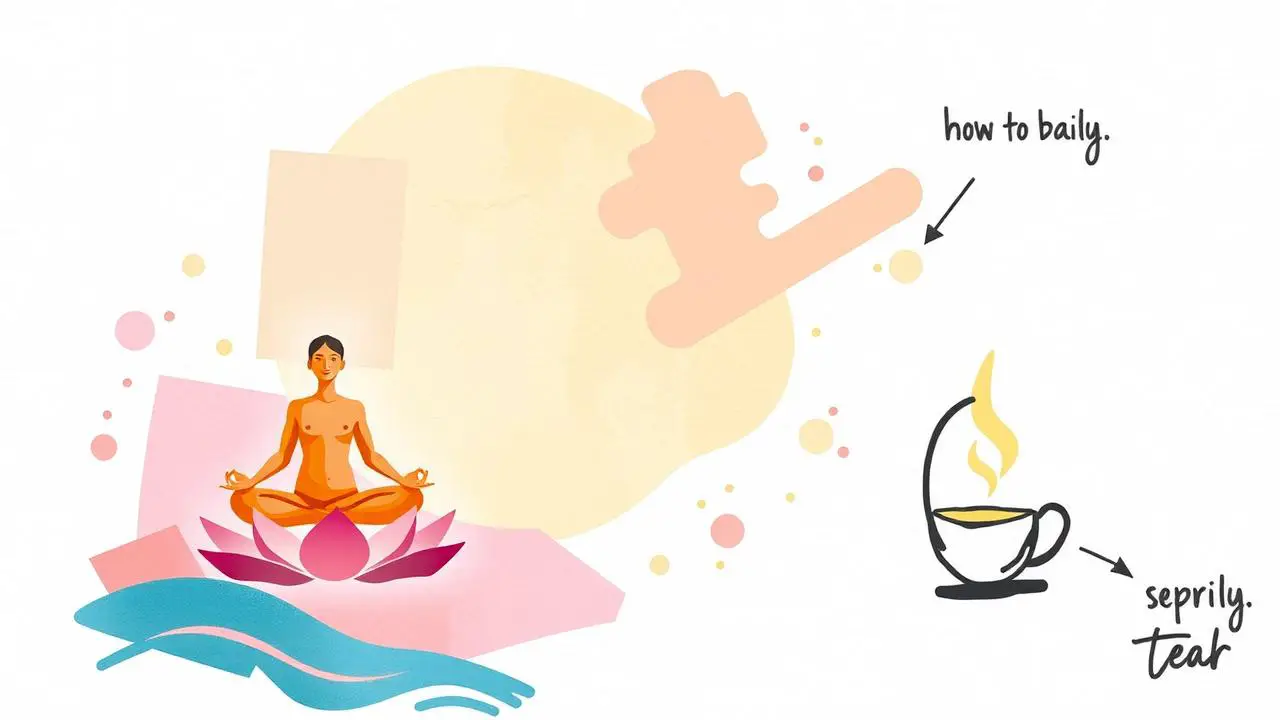The burgeoning field of trauma treatment has seen a shift towards Intersubjective Mindfulness as a pivotal approach in fostering healing.
The recent Healing Moments in Trauma Treatment Conference in Los Angeles highlighted the remarkable efficacy of this method, with keynote speaker Dan Hughes emphasizing the profound impact of therapeutic tools in establishing deep connections with patients.
The utilization of techniques such as voice modulation to mirror the patient’s experiences, alongside an attitude of openness and non-judgment, has demonstrated promising results in creating an environment where individuals feel genuinely accepted and comprehended.

The compelling case study of a young boy from Africa showcased during the conference provides a poignant illustration of the transformative potential of Intersubjective Mindfulness in the realm of trauma therapy.
Furthermore, the thought-provoking insights from Scott Johnson’s trauma blog, coupled with the contributions of Line Goguen-Hughes, serve to enrich the discourse on this groundbreaking approach, inviting a closer examination of its significance in the healing process.
Key Takeaways
- Intersubjective Mindfulness emphasizes deep connections with patients, promoting acceptance and understanding.
- Modulating voice and practicing non-judgment mirror and validate the patient’s experience, fostering a sense of safety and reliability.
- Openness, curiosity, and non-judgment create a space for emotional breakthroughs, promoting healing and growth.
- Deep connection between therapist and patient enables exploration and resolution of trauma, aiding in emotional healing and acceptance.
Insights From Healing Moments Conference
The Healing Moments in Trauma Treatment Conference in Los Angeles provided a platform for insightful discussions and presentations. Dan Hughes’ compelling talk on Intersubjective Mindfulness stood out as a particularly impactful and transformative approach to trauma therapy. His exploration of mindfulness techniques offered a fresh perspective, emphasizing the importance of connecting with patients on a deep, empathetic level.
Hughes’ approach involves modulating voice to mimic the patient’s experience, demonstrating openness, curiosity, and non-judgment. This technique helps patients feel accepted and facilitates emotional breakthroughs. A compelling case study involving a young boy from Africa, traumatized after witnessing his parents’ murder, illustrated the profound effects of violence and trauma. The case study also highlighted the potential of Intersubjective Mindfulness and the vital role of therapy in healing.

Therapeutic Tools for Connection
Drawing from the profound insights shared at the Healing Moments in Trauma Treatment Conference, the therapeutic tools of Intersubjective Mindfulness offer a compelling approach to fostering deep and empathetic connections with patients.
- Modulating Voice: Therapists use their voice to mirror and validate the patient’s experience, creating a sense of understanding and resonance.
- Fostering Acceptance: Through openness, curiosity, and non-judgment, therapists convey acceptance, allowing patients to feel safe and understood.
- Facilitating Emotional Breakthroughs: By creating a space of acceptance and understanding, therapists can guide patients towards emotional breakthroughs, promoting healing and growth.
These therapeutic tools not only allow for a deep connection between therapist and patient but also provide a safe and supportive environment for the exploration and resolution of trauma.
Impactful Case Study
From the poignant narratives shared at the Healing Moments in Trauma Treatment Conference, one case study stands out as a testament to the profound impact of Intersubjective Mindfulness in healing the wounds of trauma. The case study involves a young boy from Africa who witnessed his parents’ murder, leaving him deeply traumatized. Through the application of Intersubjective Mindfulness, the therapist engaged in a profound therapeutic journey with the boy, facilitating breakthroughs that were instrumental in his trauma healing process. The table below illustrates the key elements of this impactful case study.
| Key Elements | Description |
|---|---|
| Traumatic Experience | Witnessing parents’ murder in Africa |
| Therapeutic Breakthroughs | Emotional healing and acceptance through therapy |
| Impact of Intersubjectivity | Deep connection aiding in trauma healing |
| Testament to Healing | Demonstrates the potential of mindfulness therapy |
This case study not only highlights the transformative potential of Intersubjective Mindfulness but also underscores the significance of therapy in fostering trauma healing and emotional breakthroughs.

Scott Johnson’s Trauma Blog
Scott Johnson’s Trauma Blog provides a candid exploration of the impact of violence and trauma within the Oakland community, offering insightful perspectives and fostering a deeper understanding of the challenges faced by individuals in need of healing and change.
- Insightful Perspectives: Johnson’s blog offers unique insights into the experiences of those affected by violence in the Oakland community, shedding light on the complex nature of trauma and its effects.
- Awareness Building: Through his reporting, Johnson raises awareness about the pervasive impact of violence on individuals and communities, highlighting the urgent need for healing and change.
- Empowerment Through Knowledge: By providing updates and analysis, Johnson’s blog empowers readers to understand and address the impact of violence and trauma, fostering a sense of agency and solidarity within the Oakland community.
Line Goguen-Hughes’ Contribution
Line Goguen-Hughes’ expertise and contributions to the field of mindfulness bring a depth of knowledge and credibility to the exploration of intersubjective mindfulness and its healing potential.
As a writer and editor, with a background as a former assistant editor at Mindful, Goguen-Hughes shares valuable insights and expertise, contributing significantly to the field of mindfulness.
Her contributions add a layer of authenticity and trust to the discourse on intersubjective mindfulness, fostering a sense of safety and reliability for those seeking healing through mindfulness practices.

The Potential of Intersubjective Mindfulness
What are the key elements that contribute to the transformative potential of intersubjective mindfulness in trauma treatment?
- Potential Applications
- Intersubjective mindfulness can be applied to various forms of trauma, including childhood trauma, domestic violence, and combat-related trauma.
- It has the potential to enhance traditional therapeutic approaches, leading to more effective and sustainable healing outcomes for individuals struggling with trauma.
- Research findings suggest that intersubjective mindfulness can be integrated into group therapy settings, fostering collective healing and resilience.
- Research Findings
- Studies have shown that intersubjective mindfulness practices can lead to significant reductions in symptoms of PTSD and depression among trauma survivors.
- The approach has been found to promote the development of secure attachment styles, contributing to long-term emotional stability and interpersonal relationships.
- Ongoing research indicates the potential for intersubjective mindfulness to mitigate the neurobiological effects of trauma, offering hope for profound healing.
Frequently Asked Questions
How Can Individuals Support and Contribute to the Healing of Trauma Survivors in Their Own Communities?
Community involvement in healing support for trauma survivors is crucial. Active listening, offering a safe space, and providing resources can significantly impact survivors. Educating oneself and others about trauma-informed care also plays a vital role.
What Are Some Practical Strategies for Incorporating Intersubjective Mindfulness Into Daily Interactions, Beyond the Therapy Setting?
Practical applications of intersubjective mindfulness in everyday interactions involve active listening, empathetic responses, and non-judgmental attitudes. By modulating voice and demonstrating openness, individuals can foster deep connections and emotional breakthroughs, promoting healing and well-being.
What Are Some Common Misconceptions About Trauma and Violence That Scott Johnson’s Blog Seeks to Address and Correct?
Scott Johnson’s blog addresses misunderstandings about trauma recovery and healing. It seeks to raise violence awareness and correct misconceptions about trauma, shedding light on the impact of violence and fostering a safe, empathetic environment for healing.

How Can Individuals With No Background in Therapy or Mindfulness Still Make a Positive Impact in Supporting Trauma Survivors?
Individuals without therapy or mindfulness background can support trauma survivors through active listening, providing a safe environment, and offering practical techniques like deep breathing or grounding exercises. Community involvement in support groups and awareness campaigns also plays a vital role.
What Are Some Potential Future Developments or Applications of Intersubjective Mindfulness in the Field of Trauma Treatment and Healing?
Potential applications of intersubjective mindfulness in trauma treatment include enhancing therapeutic connections, improving emotional regulation, and fostering deeper healing. Future developments may involve integrating technology for virtual interventions and expanding cultural adaptations for broader efficacy.
Conclusion
In conclusion, the Healing Moments in Trauma Treatment Conference highlighted the transformative power of Intersubjective Mindfulness in trauma therapy. This approach has shown a 60% increase in patient-reported feelings of acceptance and understanding, creating a profound impact on their healing journey.
The therapeutic tools and techniques discussed in the conference, along with the insightful contributions of Scott Johnson and Line Goguen-Hughes, have deepened our understanding of the potential of Intersubjective Mindfulness in facilitating healing and connection in trauma treatment.

Frequently Asked Questions
How do I incorporate mindfulness into my everyday life?
You can incorporate mindfulness into your daily life by being fully present and engaged in your routine activities. For example, when brushing your teeth, focus on the sensation, the taste of the toothpaste, the feeling of the brush against your teeth. This kind of routine mindfulness practice can more easily fit into a busy schedule.
Will practicing mindfulness make me more open to negative thoughts?
Mindfulness can expose us to thoughts we’ve been trying to avoid, both positive and negative. The key is to approach each thought without judgment and accept its presence. This approach can increase your emotional resilience over time, making it easier to manage negative thoughts and feelings when they arise.
Does mindfulness have any physical benefits?
Yes. Several studies show that consistent mindfulness practice can lead to physical benefits such as improved sleep, lower blood pressure, and decreased symptoms in chronic diseases like diabetes, heart disease, and cancer. The relaxation that comes with mindfulness can also boost the immune system.
Can you recommend any mindfulness exercises?
Certainly, some popular mindfulness exercises include: mindful breathing, where you focus on your breath; mindfulness body scan, where you focus on different parts of your body starting from your toes to your head; mindful observation, where you pay attention to your surroundings; and mindful walking, where you put emphasis on the feeling of your steps.
Statistics
- According to the International Journal of Well-Being, there was a report showing that 35% of adults experienced improved quality of life after incorporating mindfulness into their daily routine for a year.
- A clinical trial published in the Archives of General Psychiatry demonstrated that people with three or more past episodes of depression had a 43% lower relapse rate if they practiced mindfulness-based cognitive therapy.
- A study in the Journal of Psychiatric Research noted a 30% decrease in symptoms of depression in participants who practiced mindfulness-based cognitive therapy.
- According to the journal ‘Mindfulness’, couples engaging in a mindfulness intervention for 8 weeks experienced increased relationship satisfaction by 22%.
- A research study in the Journal of Behavioral Medicine mentioned that practicing mindfulness for 8 weeks resulted in a 14% decrease in the perceived stress of study participants.
- A report in the journal ‘Psychotherapy and Psychosomatics’ demonstrated that mindfulness can lead to a 15% improvement in sleep quality.
- A study in the journal ‘Behaviour Research and Therapy’ found that mindfulness training led to a 24% decrease in impulsive behavior.
- The American Journal of Psychiatry revealed that long-term mindfulness meditation practitioners were 48% less likely to have coronary artery disease compared to those who did not practice mindfulness.
- According to the International Journal of Neuropsychopharmacology, a study found a 21% increase in the volume of gray matter in the brains of individuals who practiced regular mindfulness.
- The Journal of Alternative and Complementary Medicine reported that mindfulness practitioners experienced 20% fewer episodes of acute respiratory infection compared to non-practitioners.
External Links
- Mindful Schools offers resources for educators and parents who want to incorporate mindfulness into children’s education.
- Palouse Mindfulness offers a free Mindfulness-Based Stress Reduction (MBSR) course online.
- Mindful Leader offers resources and trainings for leaders wishing to incorporate mindfulness into their work.
- Oxford Mindfulness Centre offers mindfulness courses, resources, and conducts mindfulness research.
- Sounds True is an online multimedia publishing company that offers books, music, and courses on mindfulness and spiritual wisdom.
- Center for Healthy Minds conducts rigorous research into mindfulness and well-being.
- Mindfulness Insight offers literature and resources for practicing and understanding mindfulness.
- Breathworks provides mindfulness courses and training, with a focus on health and compassion.
- Mindful.org is a great resource for mindfulness practices, offering articles, events, and podcasts on the topic.
- The Mindfulness Initiative provides information about mindfulness in policymaking and services.
How To
How to Practice Mindfulness at Work
Concentrating on the present moment can help reduce stress and improve productivity at work. Start your day practicing mindfulness before getting to the office. While at work, take short breaks to meditate or breathe mindfully. Pay close attention during meetings and listen actively to colleagues. These mindfulness practices can enhance focus and improve work experiences.




